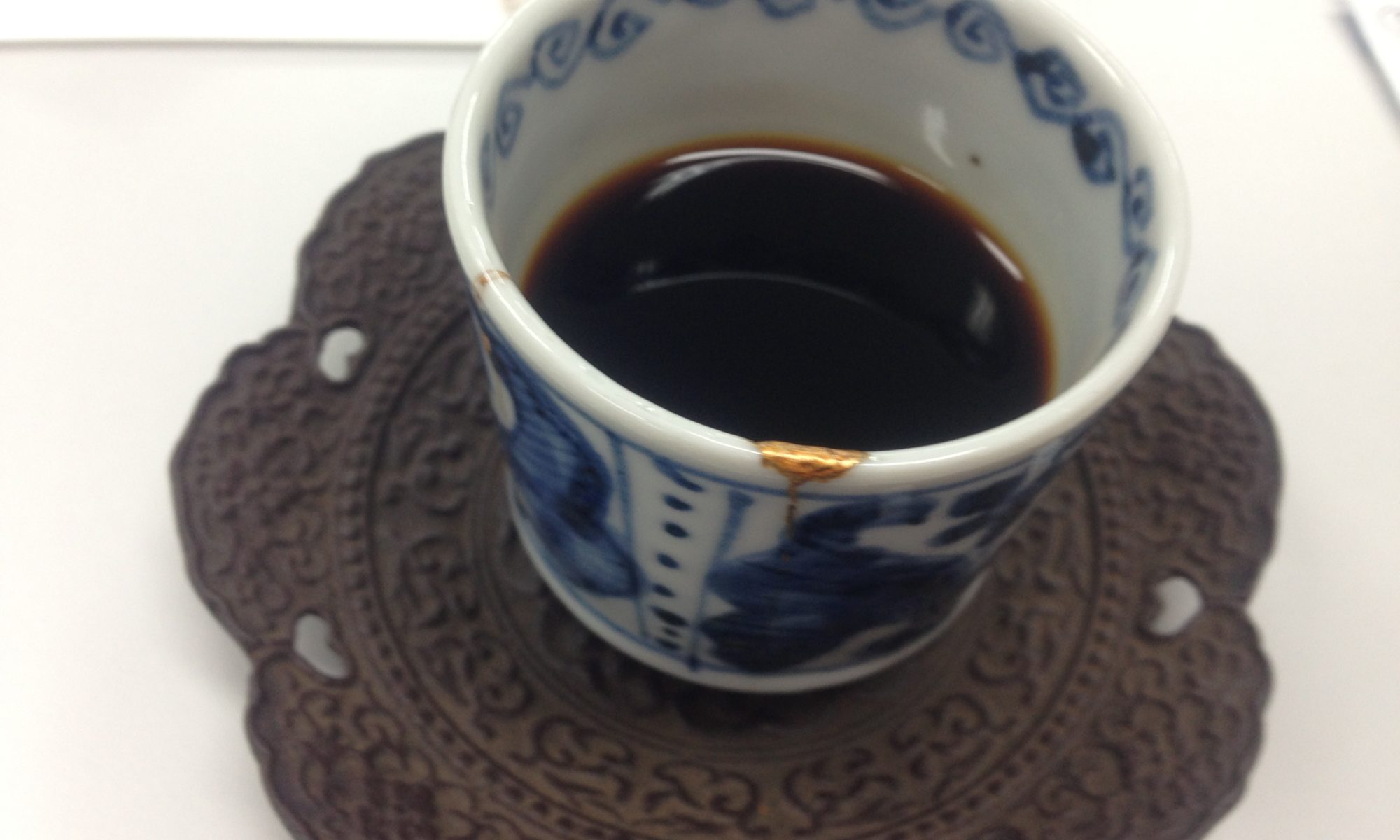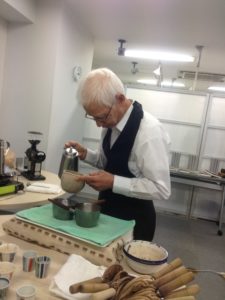
I would like to introduce Daibo-san who had owned and managed the masterpiece Japanese coffee house, the Daibo Coffee House, for thirty-eight years. The Daibo Coffee House has not been functional since 2013 due to the demolition of the old building in Aoyama, Tokyo, where Daibo-san’s shop was located on the second floor. The fashionable area has many world-renowned fashion brand stores such as Gucci, Louis Vuitton, and Prada. The Daibo Coffee House took advantage of the extravagant atmosphere to express Daibo-san’s own world in con
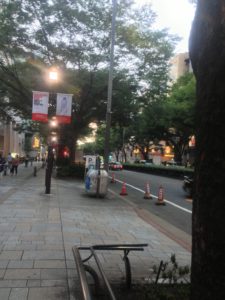
trast to the unique and, sometimes chaotic sounds of Aoyama, where not only young people but also some political activists walk, march, yell, and “chant” their slogans, being monitored by the police (some use microphones and vehicles with loud militant music, giving us the time-slipping dizziness of the extreme-right era of Japan and reminding us oh-this-is-also-freedom-of-expression”). Such atmosphere of the Daibo Coffee House also attracts high-profile people and “household names,” such as Haruki Murakami, the nominee for the Nobel Prize for Literature; Seiji Ozawa, the world famous maestro who conducted the New Year’s Concert of the Vienna Philharmonic Orchestra, and James Freeman, the owner and founder of “Blue Bottle
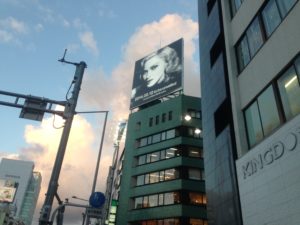
Coffee.” Daibo-san has also had the experience of being filmed in a documentary directed by Brandon Loper.
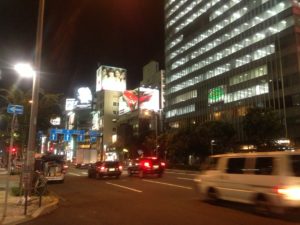
Daibo-san’s graceful and elegant conduct (which is not at all showy or stagy), following his regular procedure, always remind us of the traditional Japanese tea ceremony, Sado(茶道), which has been developed based on the principle of Zen Buddhism, and thus became uniqueness not only in Japanese coffee culture but also all over the world.
The Daibo Coffee House looks like a tea house, a Cha-Shitsu(茶室), which is a small tea room with simple but profound ambiance (Phil Knight of Nike and Larry Ellison of Oracle also have their private Cha-Shitsu rooms in their houses in the US), giving us a quiet moment of calmness and peace. This precious and peaceful moment is called Ichigo-ichie(一期一会)in Sado, which is also the title of this blog. Ichigo-ichie is the crucial concept of Sado, which means that the occasion is not accidental but rather intentional caused by spiritual fate(縁 en),and the host and guests should therefore cherish the moment with mindfulness by being grateful to each other, as this moment may be the last one. An example of Sado appreciations is the “Itadaku(いただく),” in which guests raise their Cha bowls once with both hands before drinking, as an expression of their appreciation to the host. Interestingly, it is strictly prohibited to publish textbooks describing higher levels of Sado in order to stimulate pupils to concentrate on each conduct of their masters’ (所作)in all sincerity comprehending the precious gift of Ichigo-ichie (although there are several textbooks for beginners at more elementary levels).
Daibo-san successfully initiated his second act as an instructor for young coffee masters and a “shy” performer for his fans, including me, in 2013. There are several seminars and coffee times with Daibo-san and his wife in Japan. Appreciating his performance, I strongly assert that Daibo-san is a great mentor of coffee reminding us of the coincidence of his Japanese name written in Chinese characters; 大坊 (“大 (dai),” which means “great,” “large,” or “big” and “坊 (bo),” which means “monk” or “priest.”)
Daibo method
1) Pour hot water into each coffee cup slowly from Daibo-san’s exclusive kettle, into which he himself has hammered the beak to mold it, and leave it to warm adequately for a few minutes

2) Transfer the hot water to the kettle (just as a Sado tea master would transfer hot water from a tea bowl to a Kensui 建水 special vessel)
3) Wipe the cup with a small clean towel by gently turning the cup and the towel simultaneously twice or thrice in different directions

4) Grind coffee beans using a machine (he would say that the small mobile machine is made in Germany) and transfer the coffee powder to a hand made nel
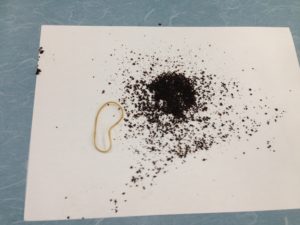
5) Now you are ready to make Daibo Coffee! Grab the kettle with your hand (if you are right-handed, grab it with your right hand) and fix the nel with the other hand (left hand) over the cup
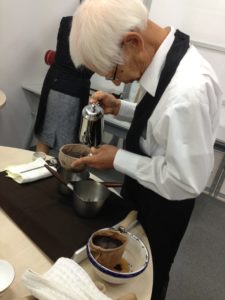
6) Pour the hot water from the kettle as slowly as possible into the center of the nel imagining that a drop of water falls on the mound of powder in the nel and rises it from the bottom. Daibo-san always expresses the dropping sound as “tachi-tachi-tachi.”
7) Change the angles and positions of the kettle in many ways while pouring hot water
8) Stop pouring according to your preference
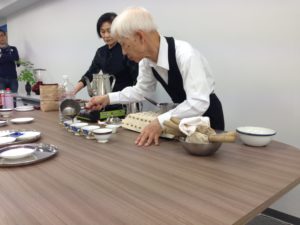
(Every photo was shot by Kay Koyama)
Written by Kay Koyama (Japan) 5-5-9 MBE114 Akasaka Minato-ku, Tokyo

